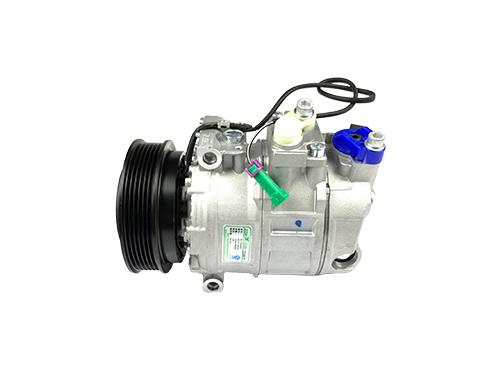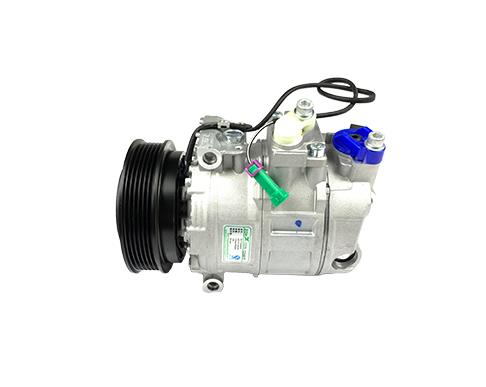
The Electrical Working Process of an Electric Vehicle's Air-Conditioning Compressor
Unlock the secrets behind electric vehicle air-conditioning systems! Dive into the electrical workings of the AC compressor, enhancing efficiency and comfort in EVs. Explore the cutting-edge technology driving cooling innovation for sustainable transportation.
ZHONGCHENG
In the realm of electric vehicles (EVs), every component plays a vital role in ensuring optimal performance and efficiency. Among these components, the air-conditioning compressor stands out as a critical element in maintaining cabin comfort. Unlike traditional internal combustion engine vehicles, where the air-conditioning compressor is belt-driven, electric vehicles utilize an electrically driven compressor for cooling purposes. Understanding the electrical working process of the air-conditioning compressor is essential for comprehending its role in the overall operation of an electric vehicle.
Introduction to the Air-Conditioning Compressor
The air-conditioning compressor in an electric vehicle is responsible for compressing refrigerant gas, which facilitates the cooling process within the vehicle's cabin. Unlike conventional compressors, which rely on mechanical power from the engine, electric vehicle compressors are powered by electricity. This distinction not only enhances efficiency but also allows for greater control over the cooling system, contributing to overall energy savings.
Functionality of the Air-Conditioning Compressor
The primary function of the air-conditioning compressor is to circulate refrigerant throughout the air conditioning system, absorbing heat from the cabin and dissipating it outside. This process involves several key steps:
1. Compression:
The compressor receives low-pressure refrigerant gas from the evaporator and compresses it, increasing its temperature and pressure significantly. This compressed gas is then routed to the condenser for further processing.
2. Condensation:
As the compressed refrigerant moves through the condenser, it releases heat to the surrounding air, causing it to condense into a high-pressure liquid. This liquid is then directed to the expansion valve.
3. Expansion:
Upon reaching the expansion valve, the high-pressure liquid undergoes a rapid expansion, leading to a decrease in temperature and pressure. This cooled refrigerant is now ready to absorb heat from the cabin air.
4. Evaporation:
The cold refrigerant enters the evaporator, where it absorbs heat from the warm cabin air, causing the refrigerant to evaporate into a low-pressure gas once again. This cooled air is then circulated back into the cabin, providing the desired cooling effect.

Electrical Working Process of the Air-Conditioning Compressor
The electrical working process of the air-conditioning compressor in an electric vehicle involves several components and subsystems working together seamlessly:
1. Electric Drive System: At the heart of the electrical working process is the electric drive system, which includes the traction motor and power electronics. When the driver activates the air conditioning, the vehicle's onboard computer sends a signal to the electric drive system to power the compressor.
2. Compressor Motor: The compressor motor, often a brushless DC (BLDC) motor, receives power from the electric drive system and converts it into mechanical energy to drive the compressor. BLDC motors are preferred for their high efficiency and precise control, ensuring optimal performance of the air-conditioning system.
3. Control Unit: A dedicated control unit or electronic control module (ECM) regulates the operation of the compressor motor based on various inputs, such as cabin temperature, desired cooling level, and battery state of charge. This control unit adjusts the compressor speed and cycling to maintain optimal cabin comfort while maximizing energy efficiency.
4. Battery System: The power required to operate the air-conditioning compressor is supplied by the vehicle's high-voltage battery system. The battery management system (BMS) monitors the battery's state of charge and temperature to ensure safe and efficient operation, especially during high-demand scenarios such as rapid cooling in hot weather conditions.
5. Sensors and Feedback Mechanisms: Various sensors, including temperature sensors, pressure sensors, and humidity sensors, provide real-time data to the control unit, allowing for precise control of the air-conditioning system. Feedback mechanisms ensure that the compressor adjusts its operation dynamically in response to changing environmental conditions and driver preferences.
Efficiency and Benefits
The electrical working process of the air-conditioning compressor in an electric vehicle offers several advantages over traditional belt-driven compressors:
1. Energy Efficiency: By decoupling the compressor from the engine, electric vehicle air-conditioning systems can operate more efficiently, reducing parasitic losses and improving overall vehicle efficiency.
2. Instant Cooling: Electric compressors can provide instant cooling upon activation, as they do not rely on engine speed to generate power. This ensures quick response times and enhanced driver comfort, particularly in stop-and-go traffic or during idle periods.
3. Regenerative Braking Integration: In some electric vehicles, the compressor motor can also function as a generator during regenerative braking, helping to recharge the battery while providing cabin cooling. This integration further improves overall energy efficiency and range.
4. Smart Control Strategies: The use of advanced control algorithms and predictive analytics allows electric vehicle air-conditioning systems to optimize compressor operation based on factors such as battery state of charge, cabin occupancy, and external weather conditions. This smart control strategy maximizes efficiency without compromising comfort.
Conclusion
The electrical working process of the air-conditioning compressor in an electric vehicle exemplifies the innovative approach to automotive thermal management. By harnessing the power of electricity, electric compressors offer superior efficiency, performance, and comfort compared to their conventional counterparts. As electric vehicles continue to evolve, advancements in air-conditioning technology will play a pivotal role in shaping the future of sustainable transportation.
-
What are the effects of the two types of automobile air-conditioning compressors on fuel consumption and performance
 2021-04-14
2021-04-14
-
The main parts of automobile air-conditioning compressor: what is the electromagnetic clutch
 2021-04-14
2021-04-14






